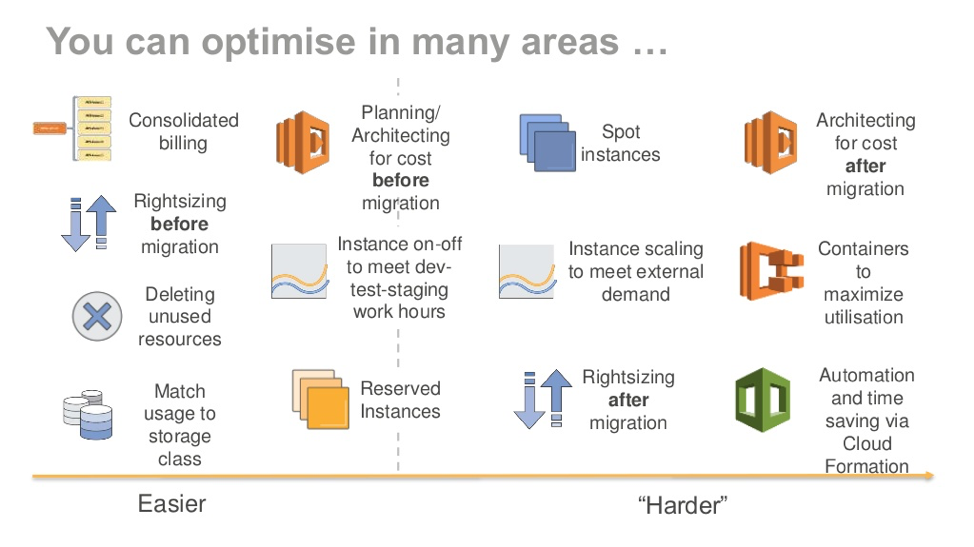Gul Paryani
I’ve been around the IT industry as a customer and on the vendor side for most of my life, including time spent working in storage, hyper-converged infrastructure, and monitoring. In that time I was exposed to most of the good, bad, and ugly that comes with infrastructure and operations in enterprise environments. In one of those previous gigs, I helped customers with visibility into infrastructure costs, including public/private cloud.
At the time, the level of full stack visibility was awesome! I was able to show customers that by right-sizing their cloud infrastructure they could save millions of dollars. One specific customer was an epiphany for me. The company had lifted-and-shifted approximately ten percent of its infrastructure to the public cloud, and it intended to move most and maybe all of the rest later on.
After working with the firm for about three months, we were able to show that by right-sizing just that ten percent of migrated infrastructure, it could save about $800,000 per month’ Amazing! We could save the company $6 million in one year! That’s when one senior manager spoke up (slightly paraphrased):
‘Great job! The fact that we can realize that savings is incredible! The challenge is, we only have a team of three to implement those suggestions and we just can’t add this to the current workload. It’s great to have that data, but almost impossible to execute without adding headcount.’
Fast forward to my landing here at Morpheus. My epiphany came about during a conversation with our CTO while I was interviewing here. The right-sizing effort in-and-of-itself is cost prohibitive to organizations, and more importantly, it addresses only a symptom of a much larger problem.
You’ve got to be systematic’ not symptomatic
The main reason that right-sizing effort needs to occur is that of a lack of controls’ that’s right’ simple governance (or maybe not that simple, given how many people are lacking consistent role-based access). I’ve worked in IT for about half my career, and every company had a common theme: Elevated risk and compliance issues due to poorly implemented governance.
In many cases, the companies relied on the ‘honor system.’ End-user and operations staff were given a set of unwritten rules about how to provide resources for our business ‘ in this instance, how we provision infrastructure resources (think VMs) for our business users ‘ without real standards in place or concern for ‘IT hygiene,’ i.e., how/why things get commissioned and decommissioned. It often took developers and R&D teams so long to get the VMs they requested that once they were done with a project they would wipe and re-use those resources rather than release them and properly decommission things. This results in a huge waste of capital and manpower, or worst of all, unsuccessful outcomes for the business and massive compliance concerns.
Morpheus Data is an amazing platform for user self-service, but it’s not the speed of deployment or provisioning that amazes me. The best part of the platform is automating governance, which in turn improves the quality of IT operations and consistency of service delivery. Setting up policies about what end-users (yes, ‘the business!’) can provision, how much they can provision, where they can provision, and even what happens to expire and reclaim resources lets the infrastructure and operations team implement the types of guardrails that prevent massive cloud overspend in the first place. You could even consider it compliance-as-code as a front end to infrastructure-as-code… you’ve got to have both to manage cloud complexity.

Source: Sandeep Cashyap, Business Development @ Amazon, via SlideShare
By staying inside the guardrails, we are assured of three things. First, the business has the agility that cloud promises across every public or private cloud deployed. Second, the right-sizing effort gets much less labor intensive. And third, by using Morpheus, the human time required is minimized ‘ fewer people involved in the process means fewer mistakes. Fewer mistakes mean a more repeatable process for the business. This accelerates IT staff’s ability to work on those higher-level business functions, such as modernizing application stacks and getting to DevOps nirvana.
To top it all off, this highly automated and well-governed cloud management platform includes a host of brownfield discovery tools and built-in right-sizing. So not only can you get your house in order, you can keep it that way. After my first month in, I’m still overwhelmed by how much this systematic approach to CMP has changed my life in IT.
I’d love to connect with some of you to share my new perspective and run through a quick demo of Morpheus.